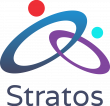Late last year NASA manifested a collective scholarly communications dream by declaring 2023 The Year of Open Science across U.S. federal granting agencies. For those of us in the States, used to looking elsewhere for national-level policies and coordination, this declaration, along with the 2022 White House Office of Science and Technology Policy (OSTP) Nelson memo, were signals we’ve long been waiting for. And while the requirements in the memo and the particular policies of each affected agency will start to play out over the next 18 months, the Year of Open Science is already more than halfway over and there is some urgency to capitalize on the moment.
Many organizations and initiatives have stated their support and are using the opportunity to highlight their own open science efforts, including, though certainly not limited to, those as diverse as HELIOS, the Open Research Funders Group (ORFG), the STM Association and the Research Data Alliance (RDA).
An Inclusive Opportunity
It’s important to note that Open Science is, in this context at least, is more inclusive of a broad swath of disciplines than we’ve seen here previously, since the Nelson memo affects the National Endowment for the Humanities (NEH) and explicitly mentions book chapters and other peer reviewed content as well as data. It is refreshing to see the conversation expanded beyond journals and beyond ‘the sciences’ (as the term is often understood). It’s worth noting the many unique challenges of the books community and those not publishing exclusively open access books should be included in these conversations.
It’s Not Too Late to Collaborate
As the story of how the Year of Open Science came to be shows (spoiler: it is not easy to coordinate swift action among large federal agencies), collaboration among like-minded colleagues is key to getting things done.
The Year of Open Science is not just a declaration; there are resources to draw on, including a certification course, the TOPS Open Science Curriculum: Open Science 101, a toolkit for agencies and a summit that took place recently at CERN. Of course, it’s also been analyzed, discussed and debated in many outlets.
Knowing where and how to start with so much going on can be difficult for any effort, but in many cases, there is no need to wait. Much of what’s in the memo is already available or already implemented, in whole or in part. Taking stock of what policies and programs are already supporting open science (setting aside the particulars for the moment if that’s useful) is a good start. And whether it’s a communications plan, a PID strategy, partnering on events or a policy review, how those can be evaluated, i.e. how to define and measure success, can help determine what’s needed between now and then. Taking a look at what others in your space are doing is always useful. ICOR collects evidence to support open science and welcomes contributions.
What About Next Year (and Beyond)?
The Year of Open Science and efforts to support its aims lay the groundwork for a much bigger opportunity for the near future, when agency policies start to go into effect. Having so many individual institutions, initiatives and affiliate groups working on open science is a great first step. A much larger, collective and cohesive effort to carry this work forward into the future, informed by shared goals and commitments would certainly be a faster and more efficient way to effect long awaited change at scale.
If you’ve got plans you’d like to share or are unsure where to start, get in touch with any available resource working on this effort. 2024 is just around the corner so the time to get involved is now.

